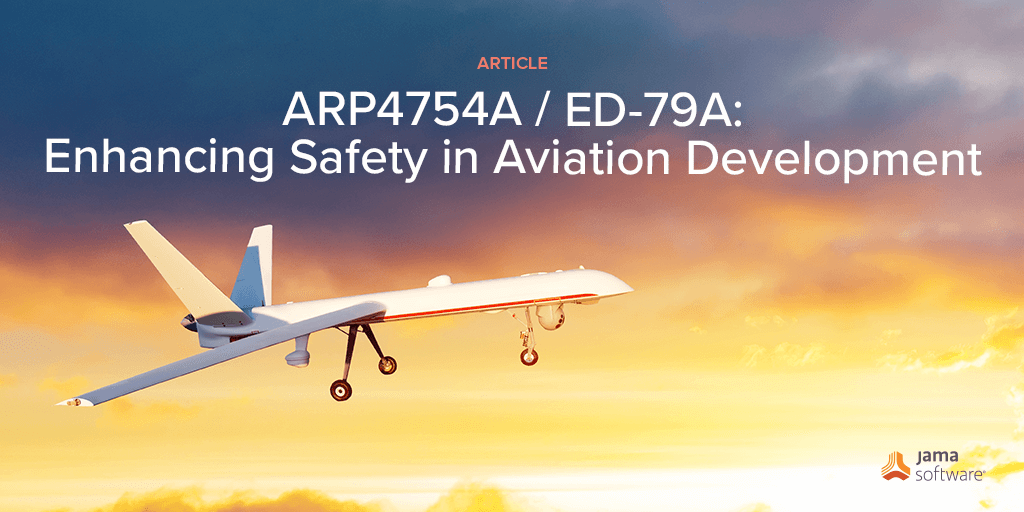ARP4754A / ED-79A: Enhancing Safety in Aviation Development
Safety is always put first in the aviation sector. Strict adherence to rules and demanding standards helps to preserve this commitment to safety. This is where ARP4754A, a significant standard, comes into play. In this blog post, we will discuss the importance and function of ARP4754A (and its EASA equivalent ED-79A, henceforth ARP4754A) and how it impacts the design of civil aircraft and systems.
Understanding ARP4754
ARP4754A, commonly known as “Guidelines for Development of Civil Aircraft and Systems,” is an industry standard published by SAE International. Its goal is to create a structured procedure for the development and certification of aircraft and related equipment in order to guarantee adherence to safety rules. From initial concept to final certification, these rules are intended to serve as a reference for engineers, designers, and manufacturers. ARP4754A is recognized as an appropriate standard for aircraft system development and certification. The corresponding EASA Acceptable Means of Compliance AMC 25.1309 (included as a section of CS-25) does recognize ARP4754/ED–79 as well.
RELATED: Jama Connect® Airborne Systems Solution Overview
Purpose and Objectives
ARP4754A’s main goal is to increase aviation safety by encouraging a methodical and uniform approach to designing and developing aircraft and systems. It aims to reduce risks and dangers related to aircraft operations by resolving potential flaws and vulnerabilities. The standard’s goals consist of:
- Safety Assessment: ARP4754A stresses performing in-depth safety evaluations to pinpoint dangers, weigh the risks, and put in place the right countermeasures. Revision A, specifically addresses functional safety and the design assurance process.
- System Development: It offers recommendations for the development of aviation systems, including requirements management, verification and validation, and configuration management.
- Considerations for Certification: ARP4754A guarantees that systems and aircraft adhere to legal criteria and certification procedures, supporting their secure integration into the aviation industry.
Development Lifecycle
The development lifecycle outlined by ARP4754A recommends adherence to established systems engineering principles and emphasizes the significance of iterative and incremental procedures, stakeholder collaboration, and requirement traceability throughout the lifecycle stages. The typical key processes covered by ARP4754A are well-defined:
- Planning Process: This stage defines the means of producing an aircraft or system which will satisfy the aircraft/system requirements and provide the level of confidence which is consistent with airworthiness requirements.
- Safety Assessment Process: Prescribes close interactions between the safety assessment process and system development process to capture safety requirements imposed on the design.
- Architecture Planning and Development: The system architecture is established, including hardware, software, and interfaces
- Requirements Process: Detailed system requirements are defined, considering functional, performance, security, and safety aspects.
- Design Process: Detailed hardware and software item requirements are defined and allocated to system requirements.
- Implementation Process: The system components are developed, integrated, and tested according to the defined design requirements.
- Verification and Validation Process: This includes the activities necessary to demonstrate that the item requirements are complete, correct, and consistent with the system needs and architecture.
- Integral Processes: ARP4754A describes additional processes that are applicable across all of the above processes. They are: Safety Assessment; Development Assurance Level Assignment; Requirements Capture; Requirements Validation; Configuration Management; Process Assurance; Certification & Regulatory Authority Coordination
RELATED: What Are DO-178C and ED-12C?
Impact on Aviation Safety
The policy related to ARP4754A plays a crucial role in ensuring safety in the aviation industry. It employs a step-by-step approach to identify and address potential hazards and risks during the early stages of development. This policy prioritizes safety assessments, risk reduction, and thorough testing, ultimately minimizing the chances of any mishaps or incidents in practical scenarios.
Moreover, ARP4754A promotes a culture of collaboration where stakeholders can effectively share knowledge and communicate throughout the development process. This ensures that safety concerns are addressed, and all parties involved have a clear understanding of their respective roles and responsibilities. The result is a coordinated effort that leads to a successful outcome.
Conclusion
The aviation industry relies heavily on ARP4754A as a fundamental benchmark and acceptable means of compliance for the development of civil aircraft and systems. By adhering to a structured approach to development, it ensures aviation safety and minimizes possible risks. Its systematic lifecycle stages, emphasis on safety assessments, and compliance with certification requirements significantly contribute to the overall reliability and integrity of aviation products. Even as the aviation industry progresses, ARP4754A remains a critical reference point, promoting a safety-first mindset and reinforcing the industry’s dedication to passenger safety.
Note: This article was drafted with the aid of AI. Additional content, edits for accuracy, and industry expertise by Decoteau Wilkerson and Cary Bryczek.
Learn how Jama Connect can be used to carry out ARP4754A: Digital Transformation and the Importance of Requirements Management Within the DoD
- [Webinar Recap] The New ARP4754B: Tips for Engineers & Quality Teams - December 30, 2024
- [Webinar Recap] Elevating MBSE with SysML: Jama Connect® and CATIA Magic in Action - September 17, 2024
- SysML is Not Enough: Why You Still Need a Requirements Management Tool - July 18, 2024
